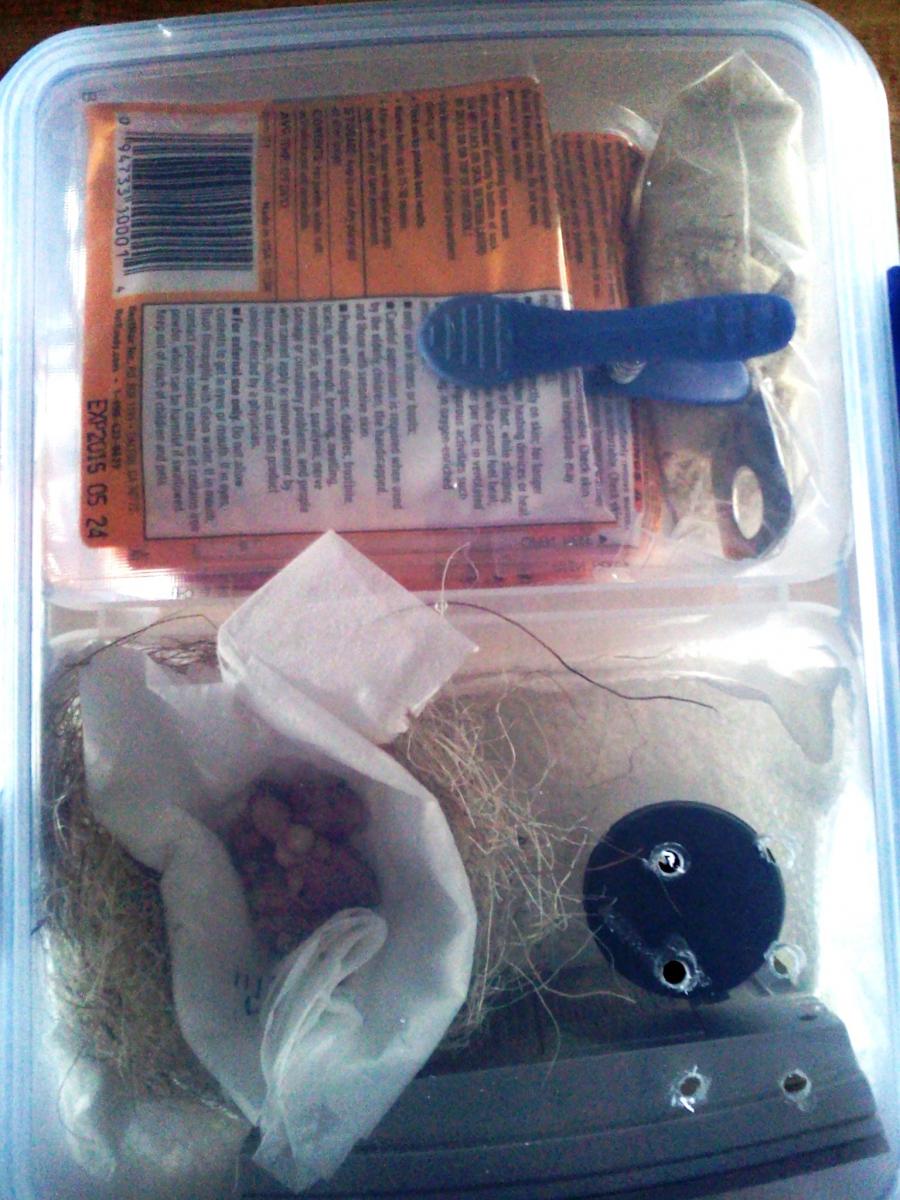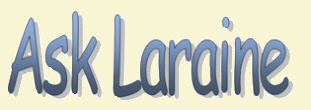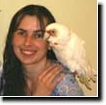HAND-FEDS ON THE FLY
Kristen Reeves, Meadowlark Farms Avian Supply, Inc.
While it rarely happens, occasionally we find the need to hand-feed chicks in our aviary. We prefer not to foster (for reasons stated in another "note") and actually prefer to hand-feed if parents toss or become ill. Because breeding season for our aviary is also typically show season, there are times we need to take hand-feds with us on the road. Because we don't always have access to electricity and have yet to find an incubator we feel is reliable, the need to come up with a system to keep the chicks warm and fed during travel was a must. Below is what we use when traveling with chicks. This travel box is NOT intended to be used as a permanent hand-feeding environment.
Shown above are the items including the following:
- Divided plastic container - one side will store items not in use, while the other will hold the chicks
- Ceramic bowl lined with nesting material and tissue for the chicks - the size of this bowl is determined by the size of the chicks, but a smaller bowl will allow the chicks to nestle against each other to preserve heat
- Small ceramic bowl and damp sponge to add humidity
- An assortment of disposable hand & foot warmers - we prefer those that last a minimum of 10 hours
- Film canister to mix and store hand feeding formula
- Zipper bag of hand-feeding formula - we prefer Vetafarm's Neocare. It is super smooth and has a higher protein content
- Measuring spoon to measure hand-feeding formula
- Hand-feeding syringes. The size of the syringe tip will depend on the size and age of the chicks. Super small for tiny chicks, slightly larger for older chicks or large-gaped chicks.
- NOT PICTURED - water from my own tap. I will only use the same water I'd use in my own aviary, so always bring a container of water; enough to mix the formula throughout our travel.
- NOT PICTURED - thermometer to monitor heat in the container
HEATING THE CERAMIC BOWL
I use my oil-filled radiator to heat the bowl before travel. It usually takes several days for it to reach optimal heat, so I make sure to put it on the radiator several days before I intend to travel with the chicks. Once the bowl is fully warmed, I activate one of the hand warmers and place it INSIDE the bowl. I then add the nesting material and tissue. The nesting material holds the heat, yet keeps the chicks from being burned, while the tissue prevents the nesting material from becoming soiled. I change it each time I feed the chicks.
TEMPERATURE
 The thermometer is placed on the side with the chicks. The hand warmer will usually keep MY container at a steady 80 degrees. If it doesn't, I will wrap the container in a small towel, or add a second warmer. But it is very important to monitor the temperature inside the box. If it gets too hot, the chicks will begin to pant and eventually die if the temperature is not immediately adjusted. If it is too cold, the chicks will not be able to process the formula, fail to thrive, and die. There is a very fine line between too hot and too cold. If I am not able to watch them myself (perhaps I'm driving), I assign one of my passengers the job of checking the temperature regularly.
The thermometer is placed on the side with the chicks. The hand warmer will usually keep MY container at a steady 80 degrees. If it doesn't, I will wrap the container in a small towel, or add a second warmer. But it is very important to monitor the temperature inside the box. If it gets too hot, the chicks will begin to pant and eventually die if the temperature is not immediately adjusted. If it is too cold, the chicks will not be able to process the formula, fail to thrive, and die. There is a very fine line between too hot and too cold. If I am not able to watch them myself (perhaps I'm driving), I assign one of my passengers the job of checking the temperature regularly.
HUMIDITY
Because the hand-warmers are a dry heat, I keep the small sponge damp and next to the dish with the chicks to add a small amount of humidity to the container.
FORMULA
Formula is mixed fresh daily minimum and is stored on the opposite side of the container. Once mixed, the lid is sealed. The heat from the chick side of the container travels through enough to keep the formula warm, but not hot. I've found that as long as the CHICKS are warm, the temperature of the formula doesn't matter. Room temperature works best for MY birds.
Chicks are fed on an ON DEMAND basis. When their crops are empty or nearly so, I then feed them again. Syringes are thoroughly washed and dried after each use.
AFTER TRAVEL
Immediately upon return from travel, I move the chicks back to my hand-feed cage then disinfect the entire travel box. Syringes are disinfected and everything except the powdered formula is STORED in the box for future use.





